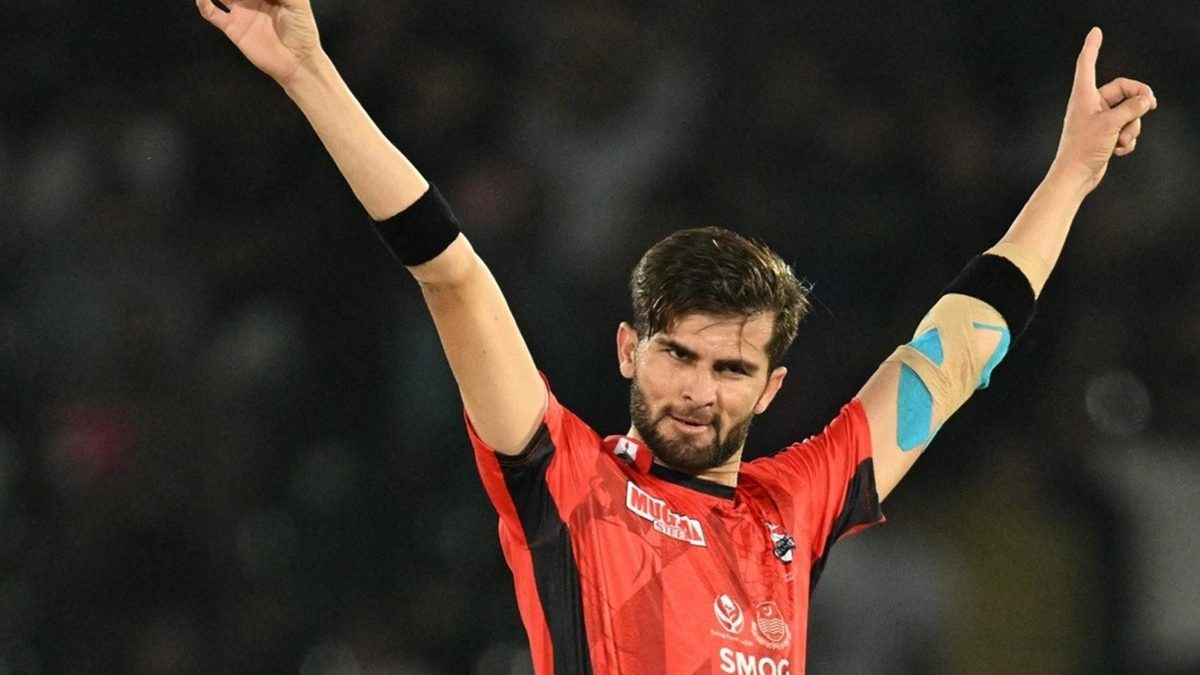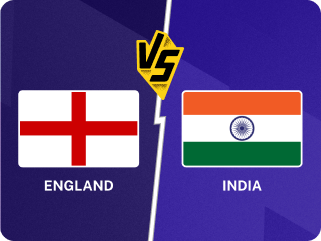
If the last two matches are anything to go by, Shaheen Shah Afridi’s ability to strike in the first over of the innings seems to be back.
As it curled into him, Rohit Sharma – it was the first ball he faced that evening – tried to play across the line, missed it completely and was trapped leg-before. Four balls into the 2021 T20 World Cup game, India were 1-1. They never recovered. Across formats, it was their first ever World Cup defeat against Pakistan.
It was not a one-off. Shaheen has always had a knack of picking up wickets in the first over of an innings, particularly in T20. Of course, him being a left-handed seamer helps. Right-handed batters outnumber their left-handed counterparts (in men’s T20 cricket, there are about 3.5 right-handers for every left-handers), while even in 2025, seamers are the popular choice for the first over.
Left-arm seamers, thus, have an advantage, especially if they can work wonders with the new ball. Like Shaheen.
Most wickets in the first over of a T20 innings
| Bowler | Arm | Type | Wickets | Average | Economy | Strike rate |
| Shaheen Shah Afridi | Left | Seam | 54 | 18.75 | 6.24 | 18 |
| David Willey | Left | Seam | 48 | 21.72 | 5.66 | 23 |
| Bhuvneshwar Kumar | Right | Seam | 46 | 22.56 | 4.99 | 27 |
| Mohammad Amir | Left | Seam | 46 | 19.56 | 5.05 | 23 |
| Trent Boult | Left | Seam | 41 | 23.43 | 5.78 | 24 |
| Sohail Tanvir | Left | Seam | 36 | 29.63 | 5.33 | 33 |
| Tim Southee | Right | Seam | 31 | 22.64 | 6.27 | 22 |
| Dale Steyn | Right | Seam | 27 | 18.51 | 4.67 | 24 |
| Akeal Hosein | Left | Spin | 26 | 23.50 | 5.55 | 25 |
Do note the dominance of left-arm seamers, despite them being outnumbered seven to one by right-arm seamers in men’s T20 cricket. Ball-by-ball data is not available for a significant chunk of ODIs. Across the ones where data is available, Chaminda Vaas (29) heads the list, followed by Mitchell Starc (26). In men’s Tests – again, where data is available – Starc (18) is at second place. Vaas and Zaheer Khan (13) are joint fifth, followed by Irfan Pathan (11).
Striking in the first over of the match is rare. It is, as we have seen in these pages, the lowest-scoring of all 20 overs in T20 cricket. The new ball plays a role in that, as does the fact that it guarantees not one but two new batters at the crease.
Steyn’s figures, for example, make it amply clear that the batters preferred to play out the first over (can you really blame anyone for that?). Bhuvneshwar, too, goes for under five an over, while Amir barely over it. Willey, Tanvir, and Hosein – the lone spinner in the 25-wicket club – all go for under six. Only Southee’s economy rate is in the Amir territory.
What truly marks Shaheen from the others is his strike rate. In the phase of play when the batters are least likely to take risks, Shaheen strikes at a rate significantly better often the others on the list.
Of the two resources, teams run out of balls more often than wickets in T20. In this, it is significantly different from ODIs. As Rahul Iyer observed, winning teams take all 10 wickets in only 58.8 per cent of men’s ODIs; for men’s T20Is, that drops to 34.5 per cent.
However, the early overs are the phase where wickets are the likeliest to make a difference, because it depletes sides of the less valuable resource for a longer part of the innings. Shaheen takes a first-over wicket every three games. The best of the others go for about one every four. That makes Shaheen invaluable as a T20 bowler.
Two games, three strikes
There is little doubt that Shaheen has not been the same bowler in Test cricket for some time. In six matches since the start of 2023, he has 17 wickets at 45.47 – a substantial decline from the 24.86 it used to be. The recent part may seem a small sample, but he did deteriorate steadily until the selectors had to drop their erstwhile spearhead. He is no longer a certain starter in the Test XI.
The ODI numbers held until 2024, but fell away rapidly in the new year, where his five games (including two in the Champions Trophy) have fetched him eight wickets at 43.62. He has gone for 7.25 an over. A small sample, yes, but the critics naturally combined the two formats.
Three, in fact. Across nine T20s in 2025 – four for Fortune Barishal in the BPL, four for Pakistan in New Zealand, one for the Lahore Qalandars in the PSL – Shaheen had six wickets at 48.67 while going at 9.12 an over. They used him first-change in one of the BPL games. He did take out Finn in the first over of the third T20I, but that had more to do with Haris Rauf’s spectacular catch. Things were not looking good.
Then, defending 220 against the Quetta Gladiators, Shaheen moved the fifth ball into Saud Shakeel, who could only chip it to Fakhar Zaman at mid-on. He also got Allen shortly afterwards, but that was with his eighth ball, outside the first over.
A small sample, of course, but against arch rivals Karachi Kings, he moved up another step. This time he found David Warner’s edge with his second ball. The fourth was a scorcher that the in-form Sam Billings underestimated, tried to flick, and... missed. A dismissal Shaheen fans have known over the years.
Twelve balls. Three wickets. Five more dot balls. One leg-bye. Two singles. One four. 2-0-6-3 across two first overs.
Make no mistake. Two matches do not confirm the return of a the first-over demon who – as evident from the table above – had already been heading the charts. But they do indicate the beginning of a comeback of one of the most-feared fast bowlers.







